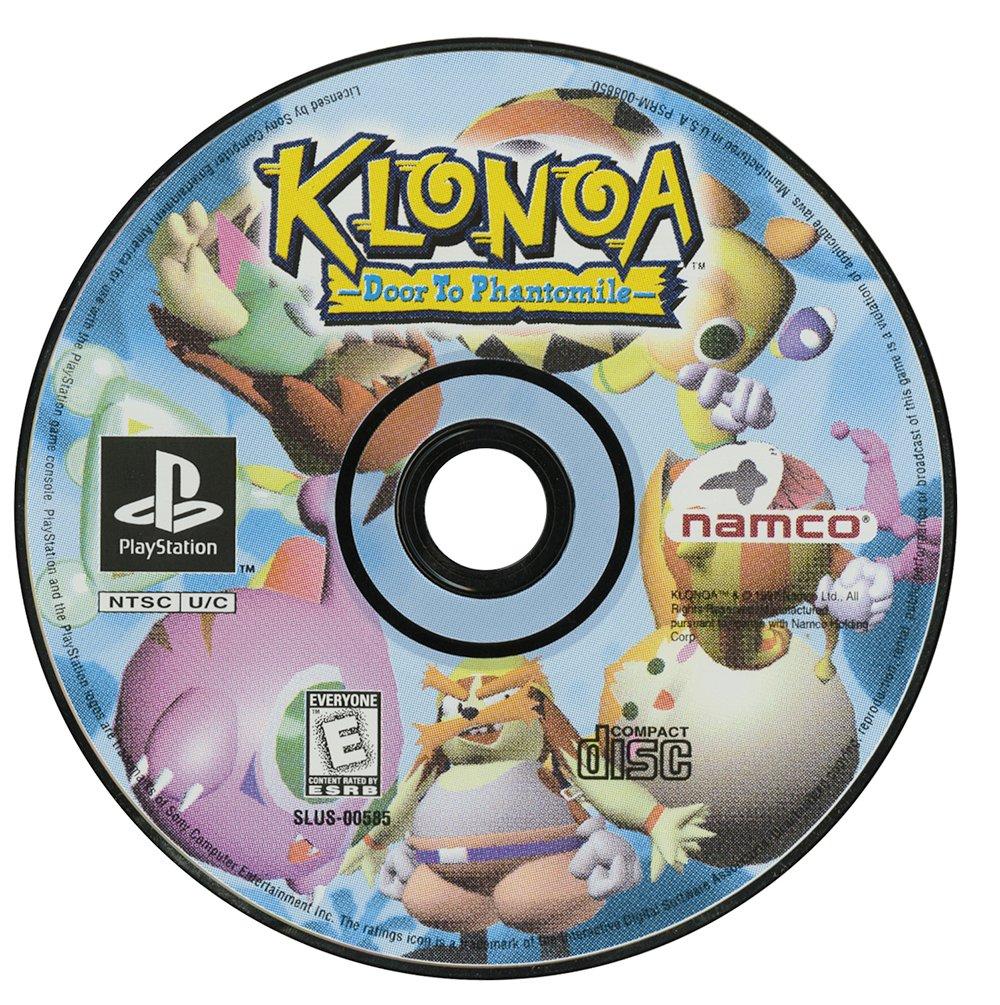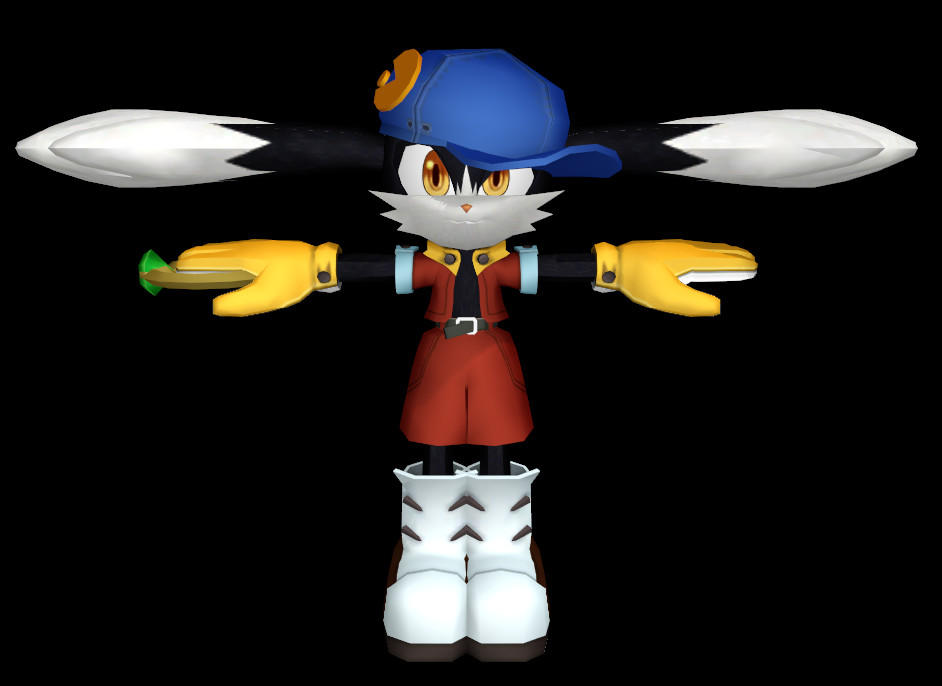
Klonoa Door To Phantomile Download

Klonoa Door To Phantomile Download Rating: 3,2/5 4080 votes
.: December 11, 1997.: March 13, 1998.: June 5, 1998Mode(s)Klonoa: Door to Phantomile is a developed and published by for the in 1997. The story follows Klonoa and his friend Huepow in their efforts to save the dream world of Phantomile from an evil spirit intent on turning it into a world of nightmares.

Klonoa (USA) WII ISO Download for the Nintendo Wii. Game description, information and WAD/WBFS/ISO download page.
The player controls Klonoa through a perspective; the stages are rendered in three dimensions but the player moves along a 2D path. Klonoa can grab enemies and throw them as projectiles, or use them as a jump boost to navigate through the stages.The game was directed by, who conceptualized the setting as a dream world that could appeal to children and adults. The Klonoa character was designed early on and the environments and other characters were designed around him. Door to Phantomile received generally positive reviews, being praised for its clever platforming and impressive graphics and cutscenes. Some critics thought it lacked in gameplay innovations and was excessive in its. In retrospect, it is considered one of the best 2.5D platformers and best PlayStation games.
It spawned, including (2001) for the, and for the. Klonoa approaching an enemyKlonoa: Door to Phantomile is a.
It is presented from a perspective; the environments are rendered in but the gameplay takes place on a 2D plane. The player moves the protagonist Klonoa along this path; he can run left and right, jump, and hover for a short period of time. The path may often curve, overlap itself, or branch into different directions. Paths visible in the background may be traversed later in the stage.Klonoa can grab enemies using a large ring inhabited by his spirit friend Huepow. After grabbing an enemy, they are inflated in a similar manner to a balloon and the player can either throw them as a projectile weapon at other enemies, or use them as a springboard to perform a larger jump.
Enemies can be thrown into the foreground or background as well as along the 2D plane. The stages are laced with obstacles that must be traversed by using a combination of these techniques. Some stages end in fights which take place in circular 3D arenas or head-on against a 2D plane.
Plot The game is set in Phantomile, a land fueled by dreams people have at night. A furry anthropomorphic animal named Klonoa has been having dreams about an airship crashing into a nearby mountain, and one day an airship does indeed crash into the mountain.
Klonoa and his friend, a 'ring spirit' named Huepow, decide to investigate. They find a dark spirit named Ghadius on the mountain searching for a magical moon pendant so he can turn Phantomile into a world of nightmares. Klonoa ventures back to town where his grandfather tells him that his grandmother knows about the pendant.Klonoa and Huepow travel to find his grandmother, who tells them that the pendant is at his grandfather's house. One of Ghadius' henchmen eavesdrops on the conversation, and ventures off to steal the pendant and kill his grandfather before Klonoa can arrive back. Klonoa eventually defeats Ghadius who unleashes a nightmarish beast known as Nahatomb as he dies. Huepow reveals himself to be a prince and helps Klonoa defeat Nahatomb and restore peace to Phantomile. After this final battle, Huepow explains that Klonoa actually came from another world and was given fake memories when summoned to Phantomile.
Tasty town online game online. Klonoa is then sucked through a portal back to his own world.Development. Original concept of the main characterKlonoa: Door to Phantomile was developed by and directed by as his tenth project. Yoshizawa is known for having previously directed (1988) for the. The idea for Door to Phantomile originated when Yoshizawa wanted to create a more cinematic game following his dissatisfaction with other developers not prioritizing story. The original concept was more serious and featured robots and an 'ancient ruins' motif.
The main character was a robot that would defeat enemies with spinning iron balls. This idea was dropped for a dreams motif and a more comical story. Yoshizawa established the dream concept because he was interested in exploring the idea of where dreams go when they are forgotten. He envisioned a world where these dreams could be collected and felt players could relate the setting to their own dreams and experiences. Namco felt that the game would appeal to a wide audience, thinking the -like aspects would be enjoyed by children and the emotional would be appreciated by adults. Lead designer Tsuyoshi Kobayashi conceptualized the fast-paced action gameplay.
Originally the game used three buttons, but was reduced to two for quicker input and faster play.Klonoa and other characters were designed by Yoshihiko Arai. The initial designs of Klonoa had a shadow-like design and the character was called 'Shady'. Arai felt that this design lacked color and dropped it.
His next design had eyes and long ears, as he believed that a person's eyes and silhouette are their foremost features. He added a large hat and necklace to give him a childlike and mischievous quality.
The character has features of a dog, cat, and rabbit but is not explicitly any particular animal. His hat features a design. After Klonoa was designed, the setting and other characters were designed around him. Having now adopted a dreams theme, the enemies were designed as nightmarish. Klonoa and Huepow's movements in cinematics were based on data.
Some of the cinematic animators acted out their own motion capture in addition to professional actors. Differences in the character movements can be spotted with a close eye, according to the developers. The cinematics were made with. The background music was the work of several different composers, each working on their stages independently.
Release The game was revealed at the 1997 trade fair with a video demonstration. In previews, both and compared the 2.5D gameplay to. Namco stated they hoped the cartoonish antics of Klonoa would appeal to children, their target demographic. The game was also presented at the 1997 with playable demos and an actor in a Klonoa costume. The game was published by Namco on December 11, 1997 in Japan. The soundtrack was published by in February the following year.
It was originally going to feature only a selection of songs because the entire score could not fit on a single disc. It was postponed so it could be upgraded to a two-disc set to fit the full score. Japan also received a based on the game, published by in March.
Namco published the game in North America on March 13, 1998, and it was published in Europe on June 5. It struggled to gain sales in North America.Door to Phantomile was included in a compilation of Namco games titled in July 2005. The Japanese exclusive compilation commemorated Namco's 50th anniversary and included five original PlayStation games by the company. It was also rereleased for Japanese mobile phones in July 2009, and as a downloadable on the in December 2011.
Reception ReceptionAggregate scoreAggregatorScore87%Review scoresPublicationScore7/1030/408/.2/108.0/105/10MAN!AC87%Critics labeled Klonoa: Door to Phantomile as Namco's first notable 3D platformer and a bid for creating a. Called it 'one of the best side-scrollers in years'. Critics praised how the game built upon simple controls and maneuvers to create interesting gameplay. Liked how the game's level design lent itself as a 'satisfying puzzle element' rather than just 'an exercise in platform skills.' IGN wrote that it was perhaps the best platformer on the market, and 'the first 2.5D platformer that makes use of classic 2D game elements without sacrificing the versatility of a 3D environment.' Critics praised the level design and diverse environments.
Although well made, some argued that it was somewhat formulaic and lacked innovation. Explained that 'it uses platforming mainstays to create a surprisingly pleasing, if generic, gaming experience.' Recommended it to fans of classic platformers. Ulrich Steppberger of Man!ac praised the game, and only was critical of the games short length.The cinematics received praise, with Edge believing they rivaled some film. The in-game graphics and visual artistry were also commended for their quality.
The game's was met with mixed reviews, some thought it was overly cute. Complained about the character voices, and labeled the cuteness 'nausea' inducing.
Others like Edge and Computer and Video Games appreciated the game's cute aspects. Because of the game's cuteness, Game Revolution felt the game was geared towards children. They also believed the game was too difficult for young players while likewise too simple for more skillful gamers. Others agreed the game was too short and could have been more challenging. Did agree that the game appealed to younger players, but felt the game had a fair challenge and could appeal to those looking for a simple game.Namco was given a 'Best Character' award for Klonoa by the in Japan for 1997. The game was deemed the Platform Game of the Year for 1998 by videogames.com, which called it a ' and 'a triumph from an unexpected source.'
Legacy Klonoa: Door to Phantomile is remembered for its blend of 2D gameplay and 3D visuals. Critics praised it for retaining classic side-scrolling gameplay while still acknowledging the industry's transition to 3D. And ranked it as the 5th and 25th best PlayStation game of all-time respectively. Called it 'arguably the best platformer released for the PlayStation' and GameSpy called it the best 2.5D game ever and of the best platformers of its generation.The game spawned, including a direct sequel titled (2001) for the, as well as other titles for the. The original game was remade in 2008 for the, called in the West. The remake was developed with key members of the original development team, including director Yoshizawa. An film set in the same universe as Door to Phantomile was announced in 2016, and canceled in 2019.